Romanian camouflage suit
Multi-protective combat outfit – Romanian camouflage suit
As explained by Captain Doctor Engineer Todirică Cornel, Head of the Technology Laboratory for Indirect Protection of Forces within the Military Equipment and Technologies Research Agency (METRA), the realization of a new combat outfit was done in several stages, starting from the creation of the software for generating the camouflage model, making the material and, finally, making the costume itself.
Camouflage pattern generation program
The program used to make the camouflage model is based on a mathematical algorithm that does not involve human subjectivity, being used as it was generated. It is specific to the territory of Romania and images from all over the country were used. The researchers from the Agency gathered images from all over the country and introduced them in the program. The result is a model that can be used anywhere in Romania, in any season, except in areas with uniform snow. „If there are surfaces without snow, then it can be used in winter. It’s a forest camouflage. We did not take into account a suit for the winter, but the pattern of shapes and colors can be generated very easily. The camouflage part, from the moment we have the images, in two days maximum the camouflage model is ready, available for printing. And a new, full uniform, ready to equip a group, a detachment, can be made, depending on the funds available, in about two months.”
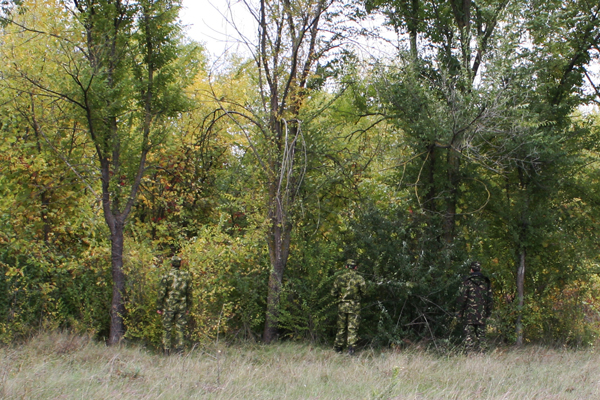
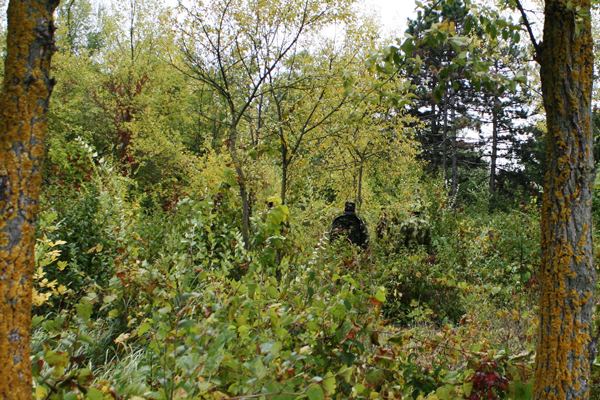
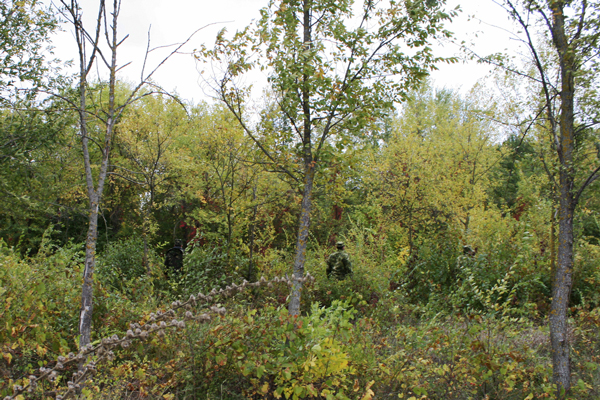
The digital camouflage model is a model generated by software, according to a well-established algorithm, and using some mathematical theories, in this case fractal theory. In terms of observation distances, the digital realization of this model, allows a wider range of camouflage. The use of mathematical algorithms allows the completion of a camouflage pattern that looks different at different distances. The camouflage pattern is generated in such a way as to ensure camouflage at multiple distances. It allows camouflage from 50 m and goes up to 100 m, even up to 200 m, a distance at which it is difficult to detect another soldier.
An obvious advantage over the old camouflage models; in those cases, an artistic model was made and printed on the material. Then a soldier was dressed in that „uniform” and put at the distance that you created the camouflage for. If you wanted that suit to offer camouflage at 100 meters, then the soldier was positioned at that distance – and the camouflage pattern was changed, drowned until the soldier could no longer be spotted.
Another advantage is the number of colors, which can be set according to the requirements of the beneficiary, the more colors there are, the better the camouflage, but also involves higher costs. The number of colors also depends on the printing method, because there are printing methods that do not allow more than five colors.
The camouflage suit is intended for camouflage in the visible and near-infrared range, for night vision devices that have an image intensifier. It goes a little beyond the visible sphere; it does not go to thermal infrared.
Material
The material was made first. It has been subjected to all tests specific to the material: breaking, stretching, wear, the action of external agents – friction, water, oils, chemicals, ultraviolet rays, color resistance to washing. „The material was fully tested two years ago and passed the specific tests for a material. When we made the initial material, we made some costumes that we wore in the polygons and in all kinds of activities, where we had work, even in the barracks. The colors don’t go as fast as they do in the current suit.”
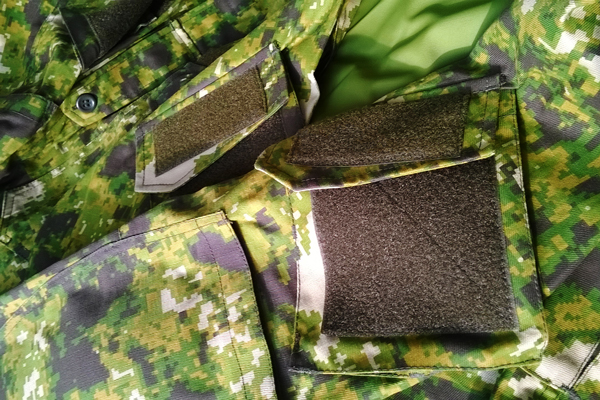
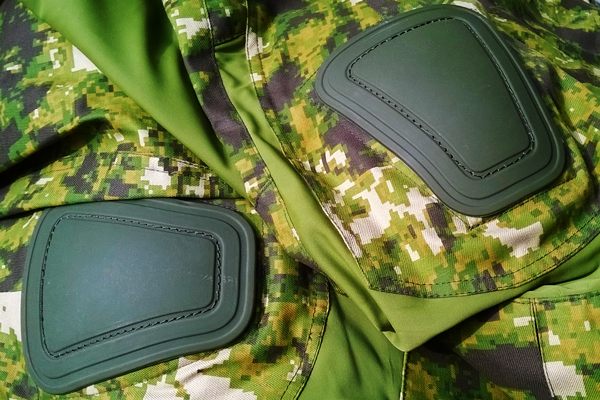
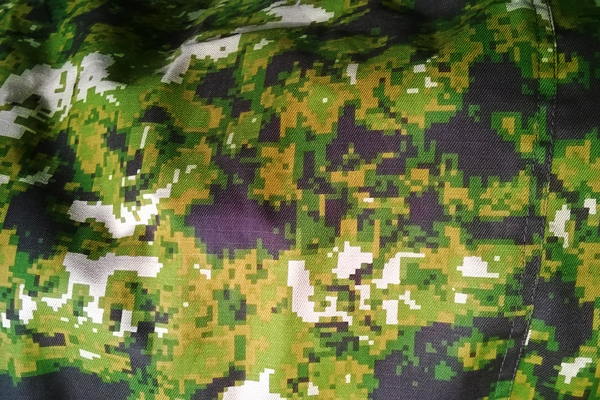
Combat uniform
The idea of the project started four years ago, when the development of software began that automatically generates the camouflage pattern with the desired shape and colors, depending on the area of interest from which the photos are introduced. „An experimental design of patterns, shapes and colors was made, which were applied on textile material. That was two years ago. Last year, there was a request from the special forces. In addition to the camouflage part, there were requirements regarding the protection of the elbows and knees and a certain ergonomics of the outfit, they wanted a combat, not a barracks outfit. They had certain requirements that were transposed into this outfit, with fewer pockets, ergonomically placed, and tilted to be accessed when the soldier was wearing a protective ballistic vest. The uniform brings some improvements over the current ones, such as the elastic extensions at the back of the pants, which makes the waistband of the pants no longer move on the body, it always remaining in the same position. Basically, when the soldier sits down, the elastic materials placed at the back are stretched, as well as in the knee area, and the waistband and knee protectors remain motionless. Being an experimental model, we made two variants, to let the beneficiary choose which variant he wants. Both variants can be used. The suit also allows a series of adjustments that allow the fighter to adapt it as well as possible to his own body and the needs of the field. From the pocket it has an adjustment for the knee brace, it rises, it is positioned where the soldier needs it and it remains in that position all the time, being an element of novelty in our country. There is also a knee adjustment behind the knee that allows the trousers to be fastened to the soldier’s leg and moved with the body, when he sits or stands up, especially in combat conditions, where the most common positions are lying down or in the knee.
It was also a requirement for a tactical blouse. It is intended to be worn under a ballistic vest. The part that comes under the vest is made of a soft material, pleasant to the touch and that dries very quickly on the soldier’s body, and only the sleeves and the collar that are similar to those of the jacket remain. The blouse can be worn when the temperatures are higher.”
Regarding the way in which this uniform was received by those who are going to use it, the captain, doctor engineer Todirică Cornel, said that those present at the reception of the costume were delighted. „Now we are in the closing phase of the project, and it will probably reach the beneficiary next month and be worn for at least two months. We will receive feedback that will be translated into the costume prototype. This was also the beneficiary’s request to make a number of 12 pieces, updated according to the observations that will be made on this suit, and which will equip a team.”
This stage of making the prototype is the one that lasts the longest and involves the most costs. Once completed, this uniform pattern can be made using any camouflage pattern is desired or necessary. „We chose this model of camouflage in this suit and for financial reasons because it cost us quite a lot to make another model, with a different pattern. Having developed it, we agreed with the beneficiary to keep this camouflage for the experimental suit, and if desired later another material can be made with another pattern. The material can be made entirely in the country. As for costs, in the experimental part, of the prototype, the costs are higher. If it went into production, I think it would come at the cost of the current costume.”
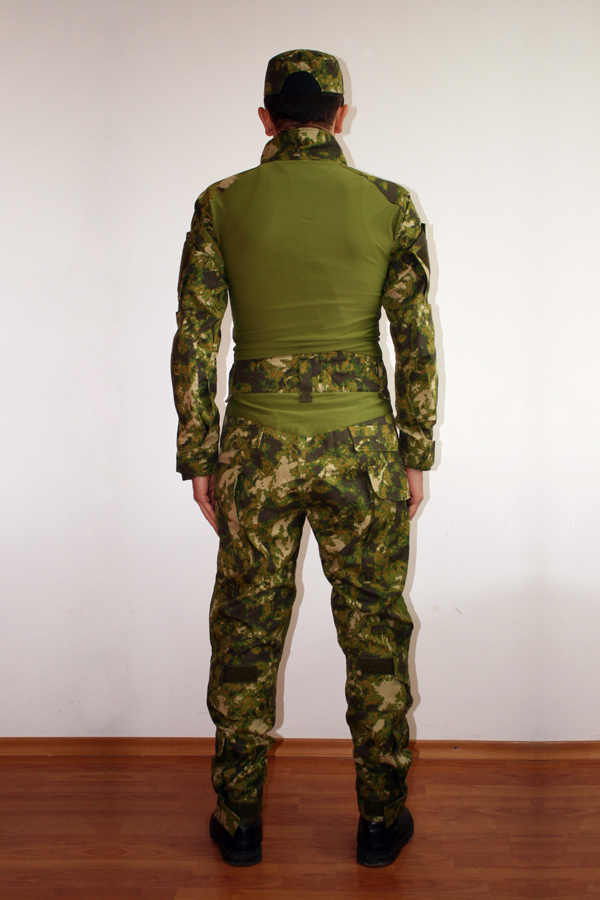
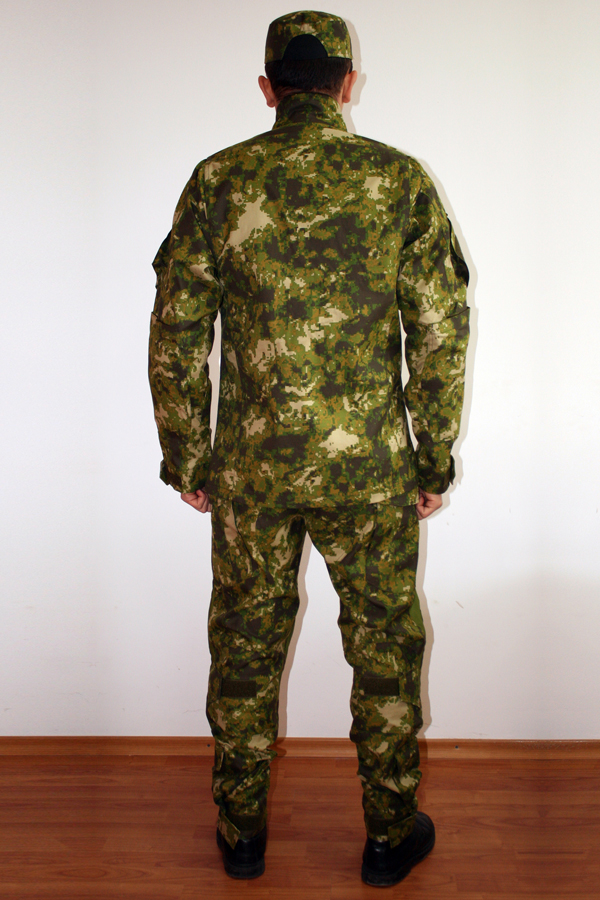
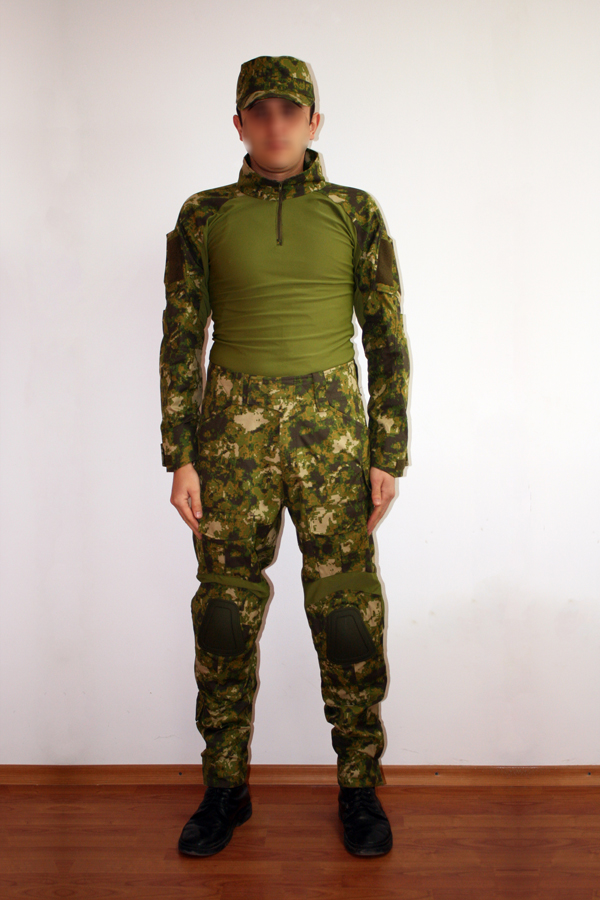
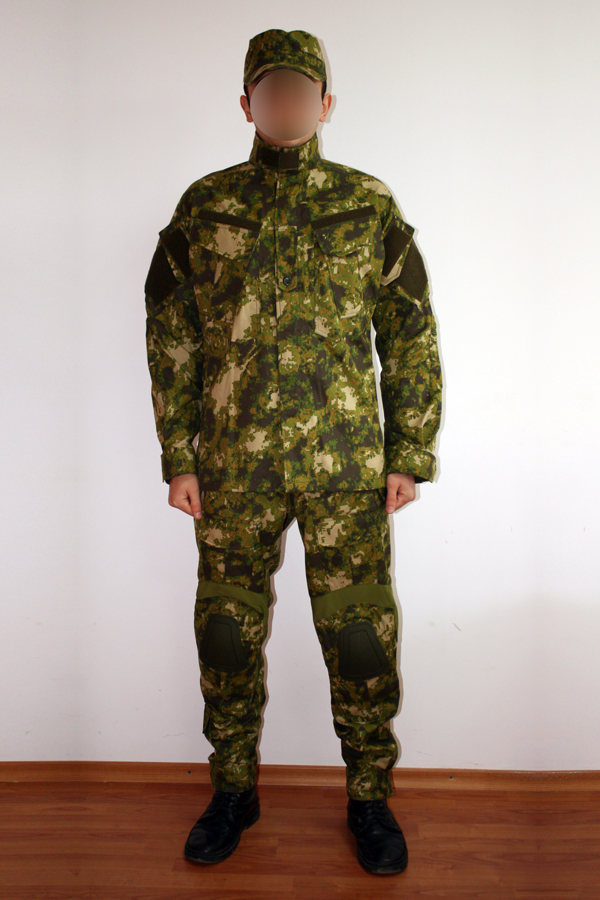
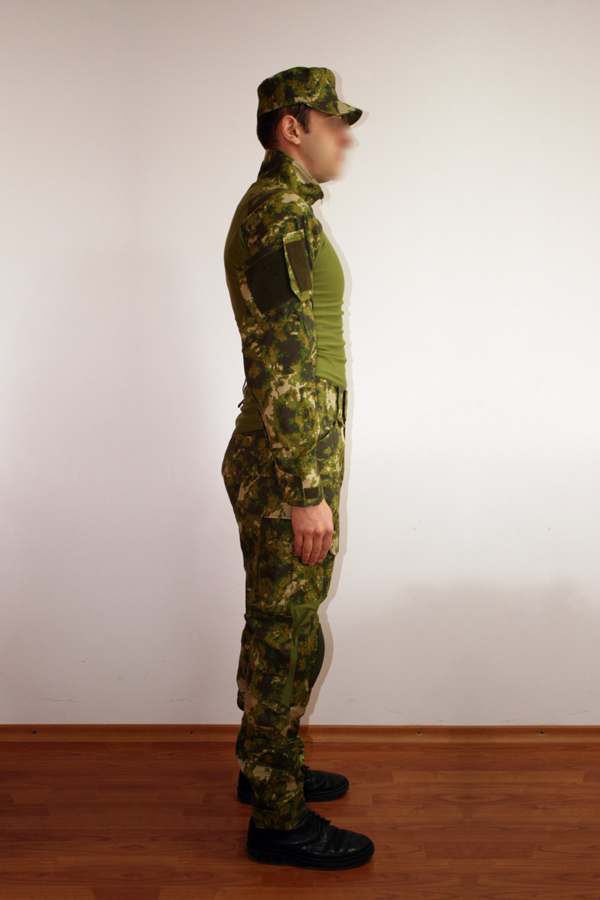
What’s next
„We will receive feedback from the beneficiary, make the prototype and approve the product. It can be done during this year. If we have funds available from the budget of the ministry allocated to this project, we can have the product approved. Funds are needed to make the necessary material for the 12 uniforms, with this camouflage model or another, depending on the beneficiary’s request, and for the actual creation of at least 12 costumes to be worn by the beneficiary. The most important thing is to have an approved product, so we can move on. This is now an experimental product.”
From this experimental model to changing the Army uniform is a long way, but the new suit could also be a model of national identity, especially now that Romania participates in a large number of multinational actions, where, most of the time, each Camouflage pattern is country specific.
Text: Marcella Dragan; Photo: Research Agency for Military Technology and Technologies



